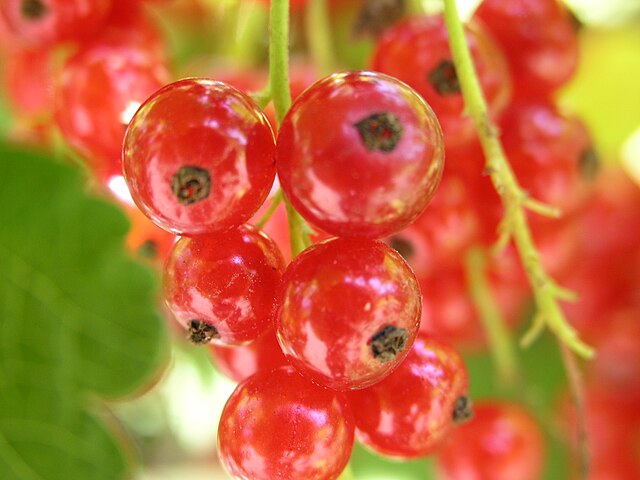The Caprifoliaceae or honeysuckle family is a clade of dicotyledonous flowering plants consisting of about 860 species in 33 to 42 genera, with a nearly cosmopolitan distribution. Centres of diversity are found in eastern North America and eastern Asia, while they are absent in tropical and southern Africa.
Caprifoliaceae
Flowering shoot of Lonicera caprifolium. 1, Fruit; 2, horizontal plan of flower.
In botany, a berry is a fleshy fruit without a stone (pit) produced from a single flower containing one ovary. Berries so defined include grapes, currants, and tomatoes, as well as cucumbers, eggplants (aubergines), persimmons and bananas, but exclude certain fruits that meet the culinary definition of berries, such as strawberries and raspberries. The berry is the most common type of fleshy fruit in which the entire outer layer of the ovary wall ripens into a potentially edible "pericarp". Berries may be formed from one or more carpels from the same flower. The seeds are usually embedded in the fleshy interior of the ovary, but there are some non-fleshy exceptions, such as Capsicum species, with air rather than pulp around their seeds.
Redcurrants, a type of berry derived from a simple (one-locule) inferior ovary
Kiwifruit, a berry derived from a compound (many carpellate) superior ovary
Coffee cherries (Coffea arabica) – described as drupes or berries
Cross-section of a cucumber pepo (Cucumis sativus)






